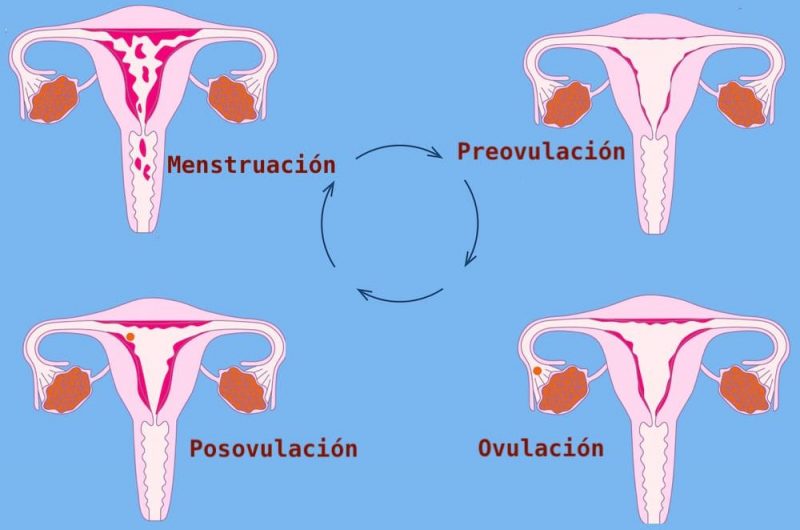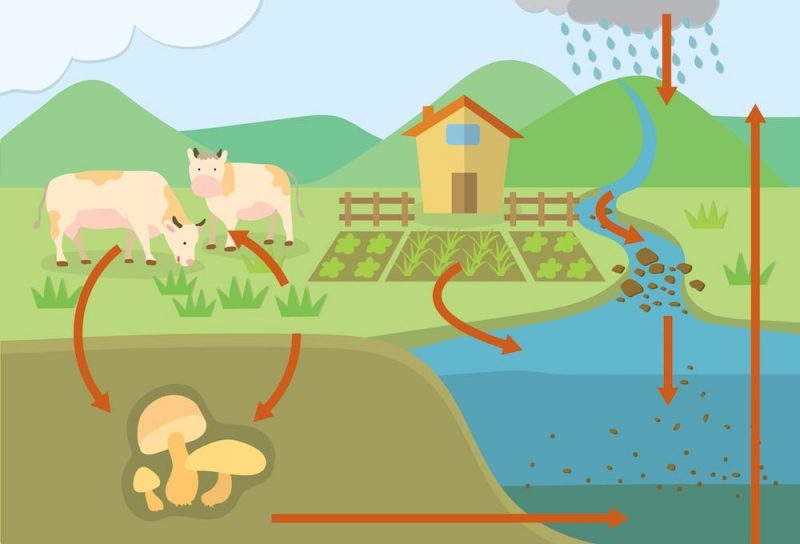We explain what a cycle is, and its specific meaning in biology, reproduction, economy and culture.

What is a cycle?
In general, we call all those processes or circuits a cycle or circuit. sets of processes that, once completed, return to their initial positionthat is, they are repeated periodically and continuously.
Human beings have always observed the cycles of nature, and we have understood that repetition is an important element to sustain a process over time. So, Most biochemical and biological processes operate in cycleslike many of the processes of human society. There are even conceptions that propose time as a gigantic cycle, instead of a straight line.
For its part, the word cycle comes from the Greek kykloswhich translates as “wheel” or “circle.” That is why we can find it as part of words such as bicycle, unicycle, cyclothymia or recycling, and many others that are associated with the idea of the wheel or with that which is periodically repeated.
Furthermore, it is etymologically linked to the verb colere (“cultivate”), since agriculture is a discipline that involves the understanding and use, precisely, of nature's climatic cycles.
It is also common to find the term cycle in relation to very specific contexts of knowledge. For example, the term is used to encompass literary works belonging to the same tradition, when they narrate events linked to the same period of time or with the same characters: the Arthurian cycle of Celtic literature, or the Trojan cycle of Greek literature.
Another example of the specific use of the word is linked to computing: an instruction cycle is the time it takes for the CPU of a computer system to execute an instruction of a program, carrying out a series of internal computing processes.
Furthermore, there are so many examples that we could cite that it would be impossible to list them all. Next, we will address the most important ones.
Life cycle
The life cycle or vital cycle is the name given to the set of vital stages of a biological organism anyone, regardless of the kingdom of life to which they belong, and that range from birth to death. This vital circuit is common to all forms of life, although it may occur through different mechanisms, and includes the following:
- Birththe starting point of life, when a new living being is generated and emerges into the real world to begin its journey.
- Growtha stage that begins as soon as the individual is born, and in which it is dedicated to feeding until it gathers the nutrients and sufficient level of development to begin its maturation stage.
- Maturationa stage in which the individual undergoes the necessary changes to prepare his or her body for reproduction. In humans, this stage is known as adolescence.
- Reproduction, stage in which the individual dedicates himself to generating as many new living beings as possible or, in the case of human beings, desirable.
- Old agestage of decay and slowing down of the metabolism, in which the degree of entropy in the organism skyrockets, and in which the individual prepares for death.
- Death, end point of life, in which the organism is unable to perpetuate its existence and perishes. Once life is over, the body begins its decomposition stage.
Menstrual cycle

The menstrual cycle (menstruation) or female reproductive cycle is a biological circuit common to all female individuals of mammalian speciesespecially the human one. Its purpose is to renew the internal tissue of the reproductive system so that it is ready and in optimal condition when the next opportunity to reproduce arises.
This cycle occurs monthly, in periods of approximately 28 days, more or less exact and coinciding with the lunar calendar. Its different stages are the following:
- Menstruationalso called period, period or menstrual bleeding, consists of the shedding of the uterine endometrium, along with a quantity of blood, over two to seven days. On those days it is normal to experience pain, irritability and hormonal changes. Normally menstruation occurs in the absence of pregnancy.
- Preovulationalso called the follicular or proliferative phase, in which the uterine tissue grows again, as the estrogens produced by the ovary make an egg mature and the endometrium thicken, producing cervical mucus.
- Ovulationintermediate moment of the cycle (around 14 days) in which the mature egg is carried from the ovary to the uterus through the fallopian tubes, in the middle of a true hormonal storm, which in some cases can cause headaches and even partial bleeding. This is the most fertile stage of the entire reproductive cycle (between five days before and one day after ovulation).
- Postovulationknown as the luteal or secretory phase, is the last stage of the cycle, during which, if pregnancy does not occur, the body prepares to restart the cycle and produce menstruation. If the egg is fertilized, however, this stage initiates the hormonal and biochemical changes that guarantee its implantation in the uterus.
Biogeochemical cycles

Biogeochemical cycles are those that They occur in nature and involve elements and/or actors of biological, geological and chemical origin.that is, living beings, elements present in the Earth's crust, and various chemical reactions.
These types of cycles allow the exchange of certain key elements for the formation of organic matter between the environment and living beings themselves, in a recycling dynamic of utmost importance for planetary life.
These cycles include the circulation of two types of nutrients:
- Macronutrientssuch as carbon, oxygen, hydrogen, nitrogen, phosphorus, sulfur, calcium, magnesium and potassium, which make up up to 95% of the body mass of living beings.
- Micronutrientsanother 132 trace elements present in small traces in the body of living beings, such as iron, copper, zinc, chlorine or iodine.
water cycle
The hydrological cycle or water cycle It is a complex circuit with planetary scope, along which water passes from one physical state to others.. Thus it moves from the different bodies of water (seas, lakes, rivers and underground deposits) to the atmosphere (in the form of vapor) and returns to precipitate as rain, snow or hail, or is deposited in the form of ice on mountain peaks and in the circumpolar regions of the planet.
This cycle It is vitally important for planetary climate stabilitysince in its transit through the different stages, the water helps the temperature to circulate and be more uniform. Furthermore, the action of water on the Earth's surface produces erosion, accentuating the relief and wearing down the material of the Earth's crust, which thus feeds the different planetary biogeochemical cycles.
Economic cycle
For its part, in economics, economic cycles or business cycles are the recurring oscillations that capitalist economies present, in which a period of expansion is followed by another of contractionfollowed by a new expansion and so on. Expansion segments are experienced as bonanzas, while contraction or recession segments are experienced as crises.
Many economists and thinkers have proposed explanations for the phenomenon of economic cycles, some of them (Keynesianism) going so far as to affirm that they are inherent to capitalism, while others (the Austrian school) consider them as the consequence of a previous artificial expansion, or that is, a product of debt and not accumulated savings.
Since the 20th century, and especially after the Great Depression of 1929, efforts have been invested in studying the economic cycle, in order to predict its causes and control the oscillation between recession and abundance, in order to obtain less variation, this That is, less exorbitant abundances, but also less pronounced recessions. In this way, we aim to achieve a balance.
Cultural cycle
The global process of creation, dissemination and valuation of cultural products or goods in the world is called the cultural cycle, according to a flexible model that proposes five recognizable links in the “life cycle” of culture:
- Creationstage in which artists and writers generate the raw material for the cultural expressions of a society. For example: an author writes a manuscript, or a musician composes a symphony.
- Productionstage in which the created work enters the cultural industry system, thus becoming a consumable cultural good. For example: the work written by the author is edited and published, or the symphony is rehearsed by a symphony until it is reproduced.
- Diffusionstage in which the produced work begins its path towards its natural audience, through the appropriate instances. For example: the author's book is sold in bookstores, or the symphony played in an amphitheater for a season.
- Promotiona stage in which additional efforts are invested to attract the public to the work produced and disseminated, making it visible through mass media or marketing strategies. For example: the author's book is presented at a book fair, or the musical symphony promoted on the radio.
- Consumptionfinal stage of the cycle, in which the work reaches its public or audience and generates a cultural experience in them, which in turn translates into celebration, fan participation, versions, etc. For example: the author's book is consumed in reading circles, or the musical symphony is used as a soundtrack in mass films.
Continue with: Calvin Cycle
References
- “Cycle (disambiguation)” on Wikipedia.
- “Cycle” in the Dictionary of the language of the Royal Spanish Academy.
- “Etymology of Cycle” in Etymologies of Chile.net.
- “Female sexual cycle” on Wikipedia.
- “Biogeochemical cycle” in Wikipedia.
- “Business cycle” on Wikipedia.
- “Hydrological cycle” in Wikipedia.
- “Cultural cycle” in UNESCO.





